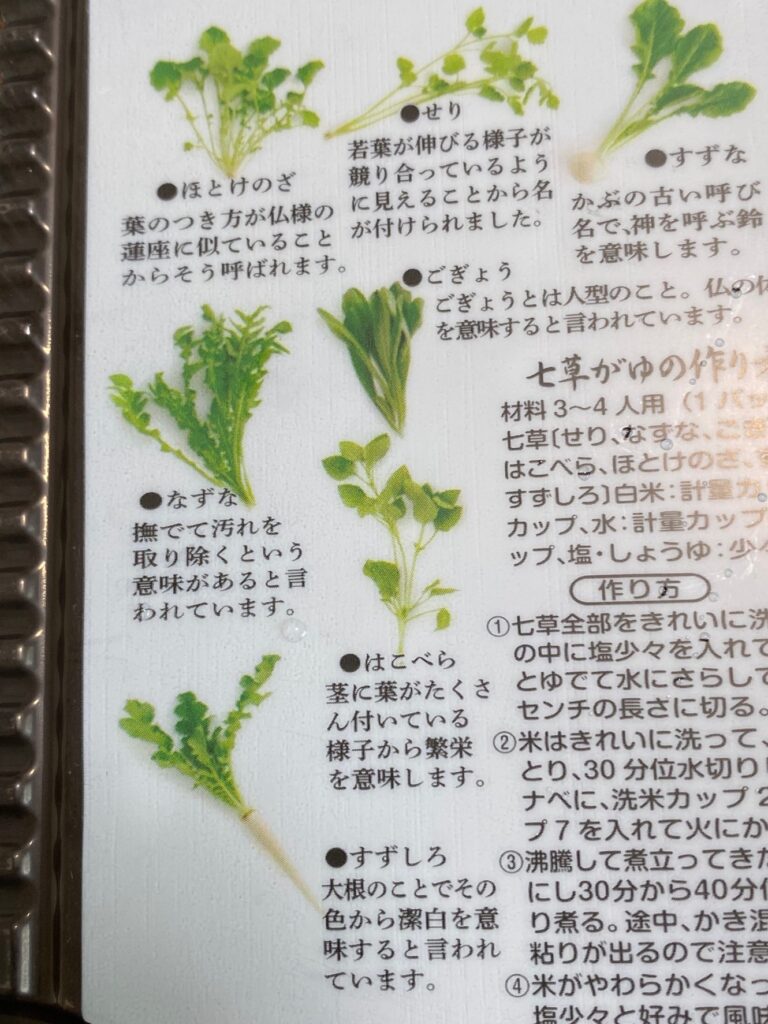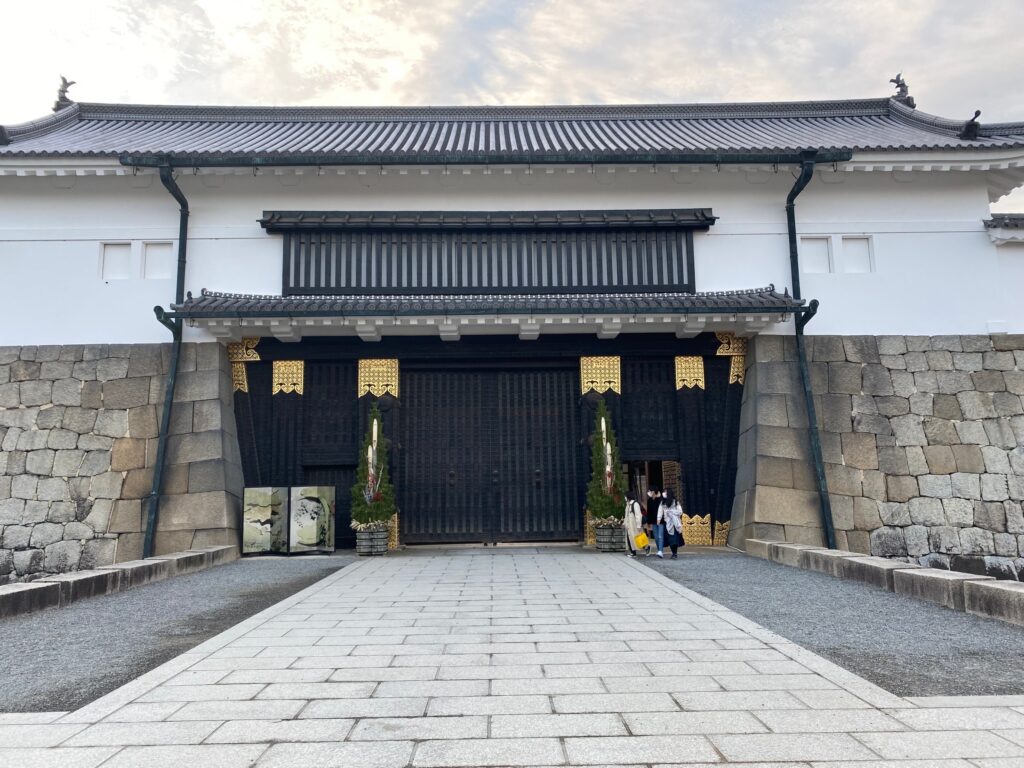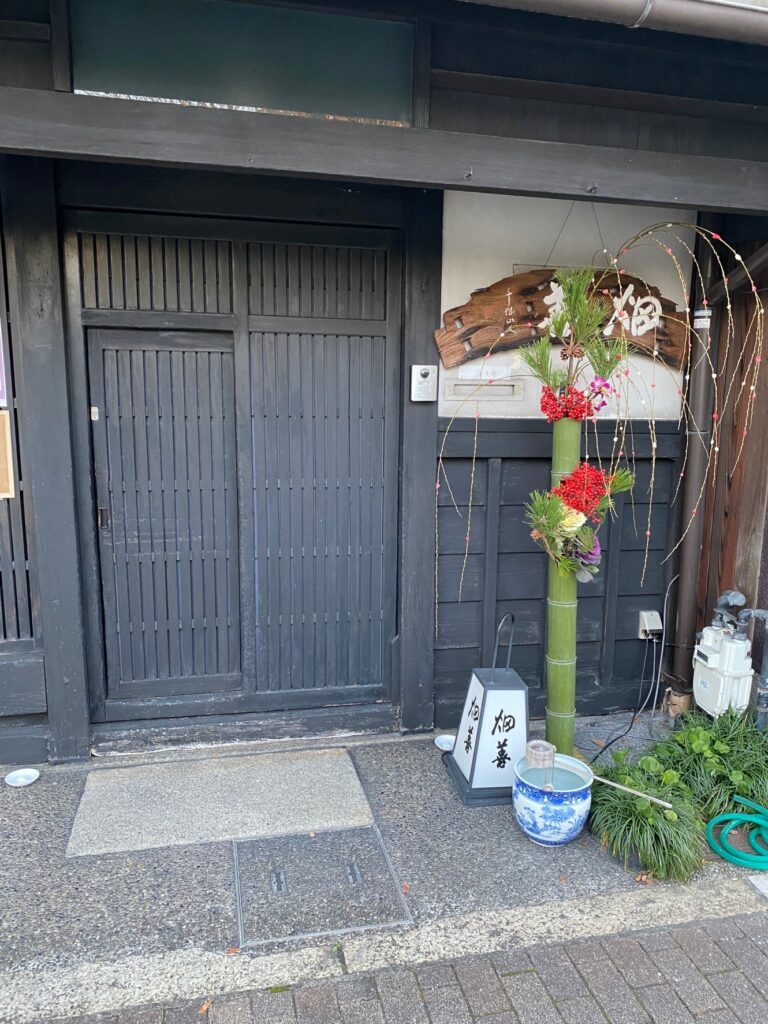2年ぶりの日本でのお正月。玄関のお正月飾りは12月30日に済ませ、31日はもっばらお節づくり。娘とおしゃべりしながら料理しました。
It has been two years since I celebrated New Year in Japan. After decorating the front door with the New Year ornaments on December 30th, my daughter and I spent the next day chatting while making traditional osechi ryori, an assortment of New Year dishes in the stacked boxes.
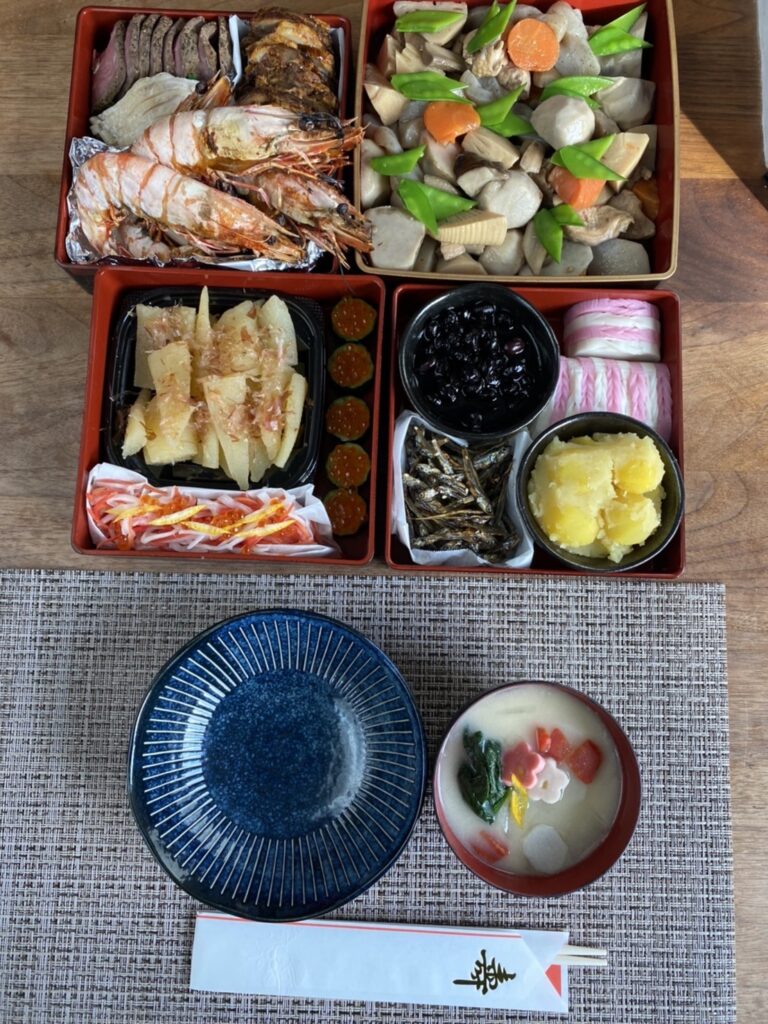
今年の1月1日はうっすらと雪の積もった朝でした。京都風の白みそ仕立てのお雑煮と前日に作ったお節をいただいた後、近くの北野天満宮へ初詣に行きました。
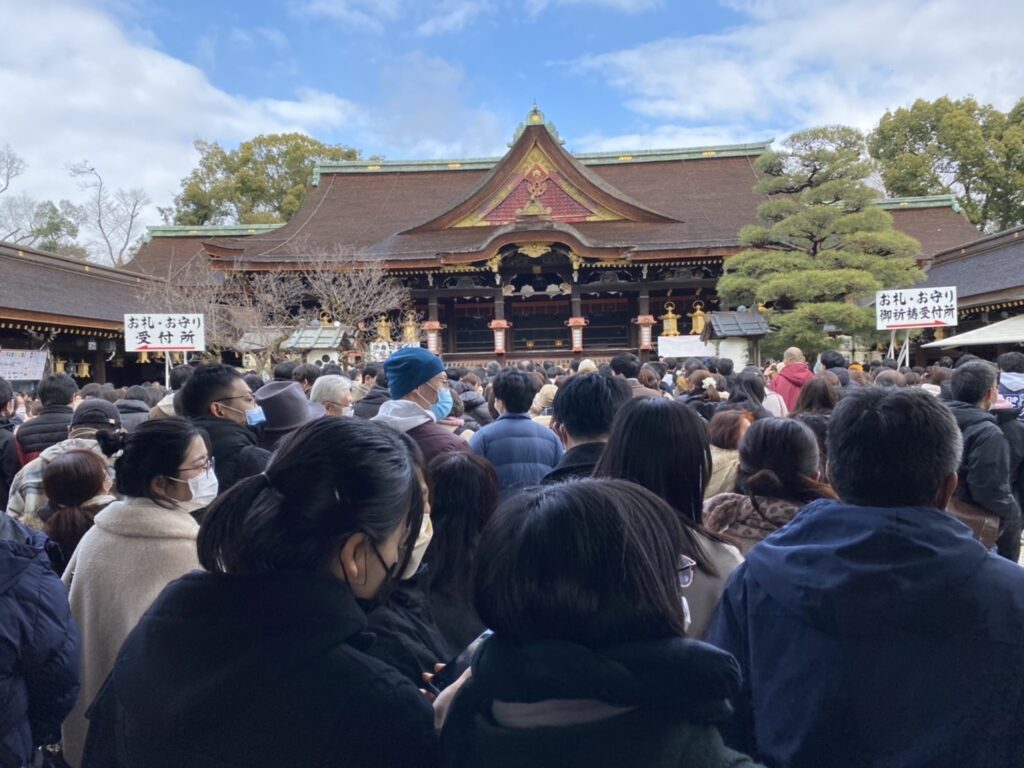
On the first day of January, we enjoyed Kyoto-style white-miso-based ozouni, New Year Day soup with mochi, and osechi ryori. Later at the Kitano Tenmangu shrine, we wished each other good luck for the new year.
二条城の門前にも門松がたちました。お料理屋さんの正月飾りもすてきでしょう?
At the gate of Nijo Castle, which is next door to our condominium, there were kadomatsu, traditional bamboo and pine decorations. I also found the unique decoration in front of the small restaurant (photo on the right).
1月7日の朝は七草がゆをいただく習慣があります。年末年始の間、お酒を飲みご馳走を食べる機会が多いため、7日目におなかに優しいおかゆを食べて身体を休ませてあげましょうという趣旨からこの習慣が古くから伝えられています。久しぶりに作ってみました。さっぱりして身体が浄められる感じがしました。
On the 7th of January, I made nanakusa gayu, a traditional rice porridge with seven herbs. The custom of eating porridge on this day started a long time ago. Its purpose is to rest our overindulged stomachs after all the feasting during celebrations in New Year. My insides felt much lighter and cleaner after eating this healthy dish.
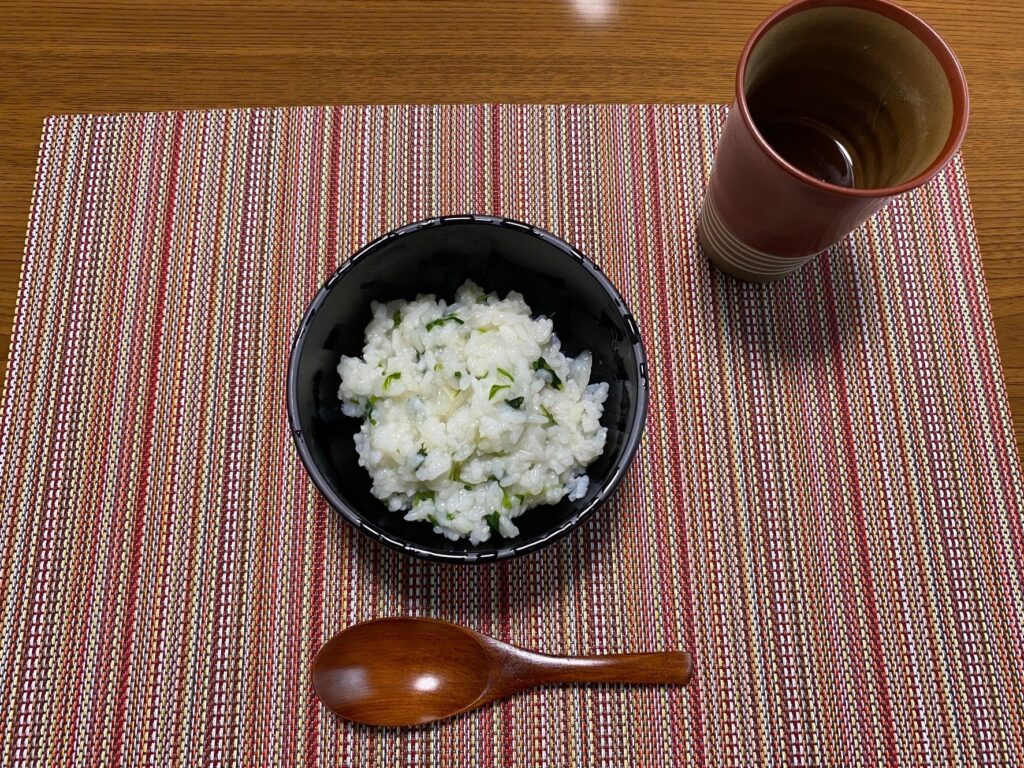
春の七草①すずしろ(大根)②なずな(蕪)③ほとけのざ(仏様が座っているような葉のつき方をしている草)④せり(澄んだ水の小川の縁に生息する草)⑤なずな(汚れを取るという意味の草)⑥ごぎょう(母子草ともいいます)⑦はこべら(茎に葉っぱが沢山ついているため、繁栄を意味する)を入れておかゆを作ります。
